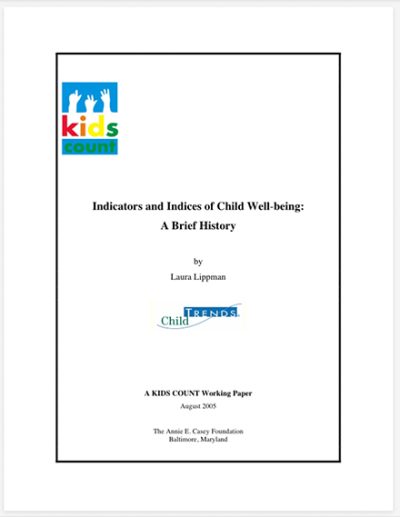Summary
This report examines the research field’s evolution in terms of identifying and leveraging social indicators of child well-being.
The exploration starts in 1929, when the Committee on Recent Social Trends — established by President Herbert Hoover — used statistical indicators to help track social trends and the published its findings in 1933.
The ensuing text spotlights seminal reports, collaborations and researchers devoted to the development of social indicators and indices of child well-being.
Among the scholars mentioned: Orville Brim and Nick Zill, who in the mid-1970s launched a charge — revolutionary at the time — to create a comprehensive set of social indicators on child well-being.
Among the collaborations mentioned: The Federal Interagency Forum on Child and Family Statistics, which was founded in 1994 to help inform and advance the collection and reporting of federal data on children and families.
Among the publications mentioned: U.S. Children and Their Families: Current Conditions and Recent Trends, which Child Trends produced in 1989 for the Select Committee on Children, Youth, and Families of the U.S. House of Representatives. The report utilized 125 indicators across a variety of domains such as family environment, parental employment, economic well-being, education, health and government programs affecting children.
Readers will also review major discussion points for the field, including the use of positive social indicators, the paucity of child mental health data, and the hurdles associated with navigating the statistical web that links children, their families and their communities.
About the Series
This publication is part of the KIDS COUNT® Working Paper series, which elevates discussions about data gaps, results and trends related to the KIDS COUNT database.






